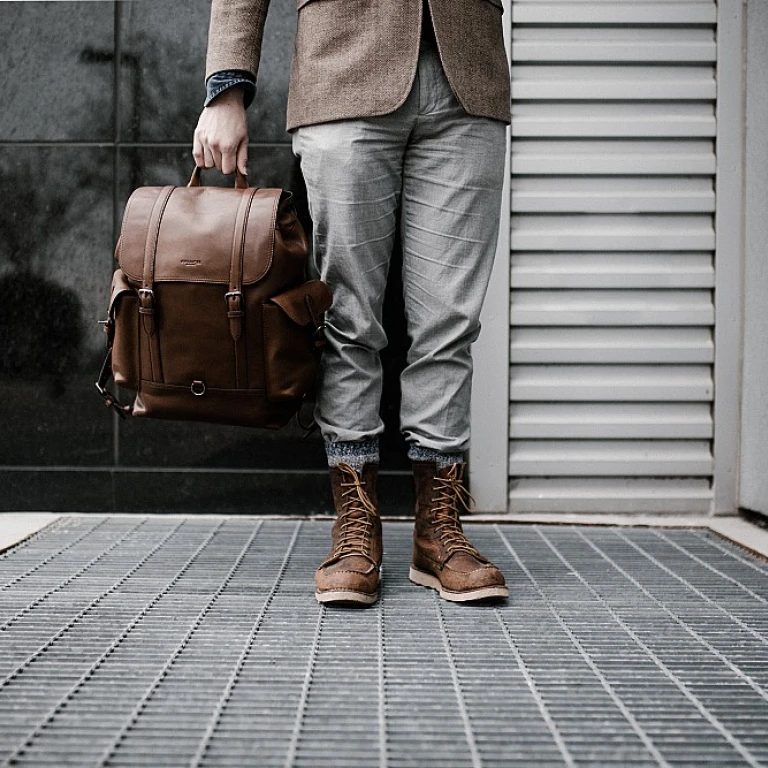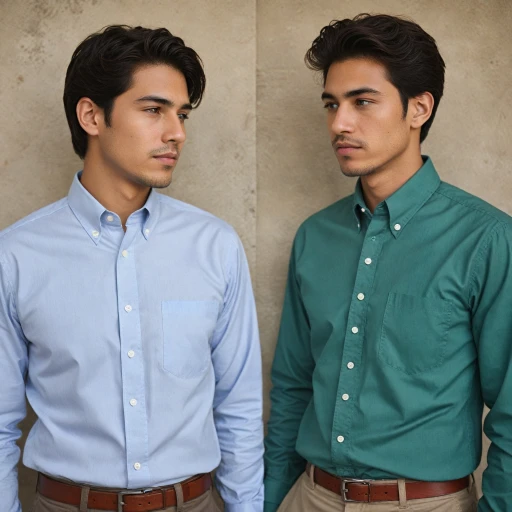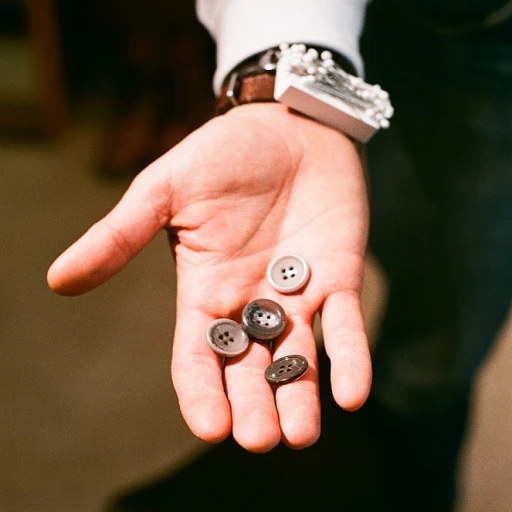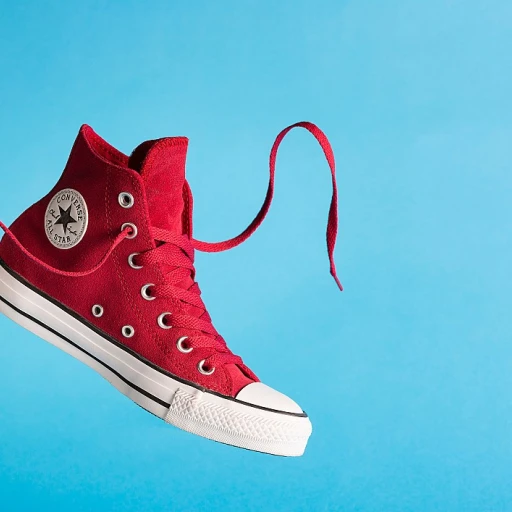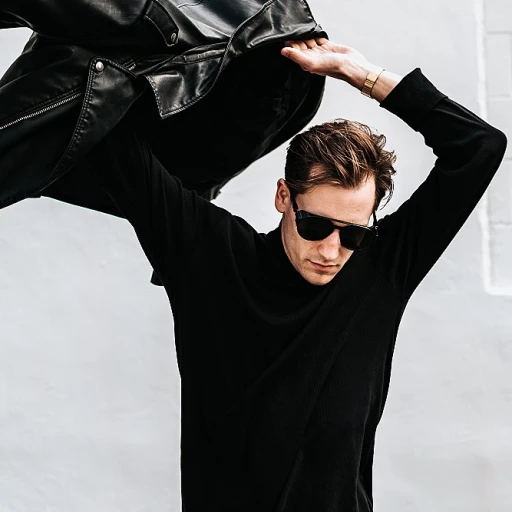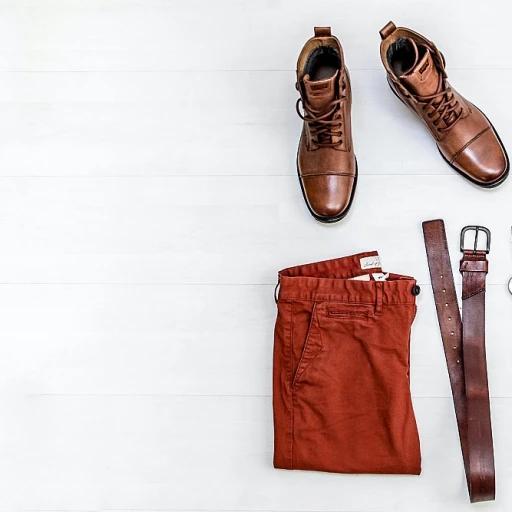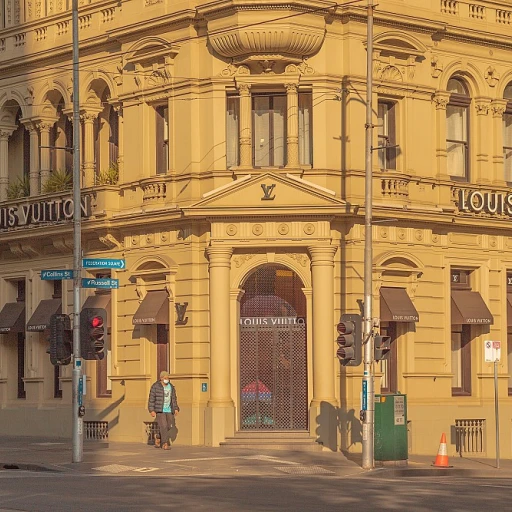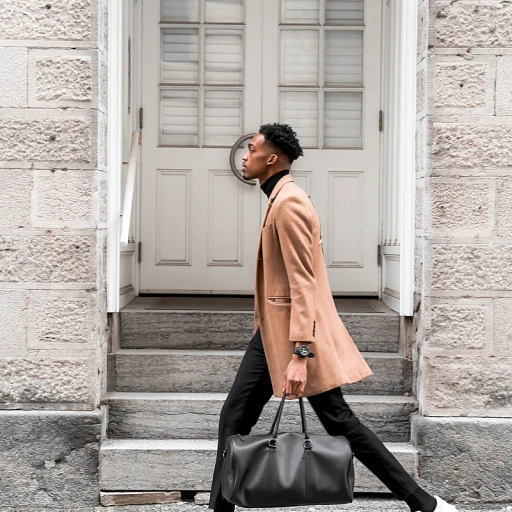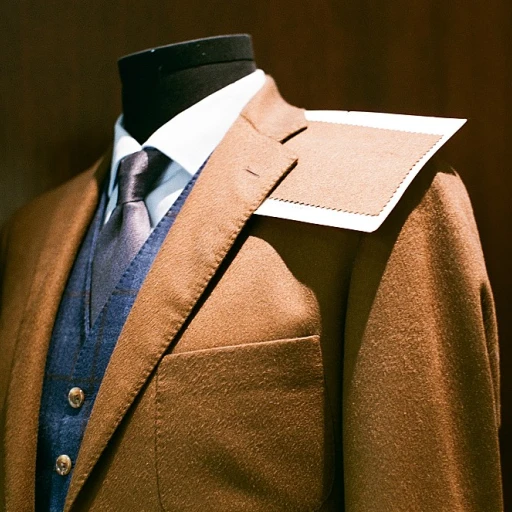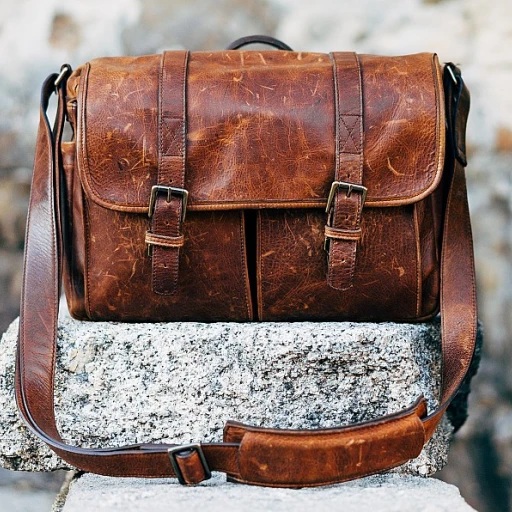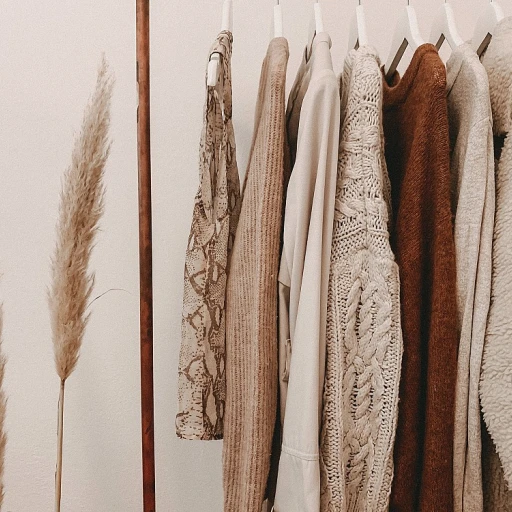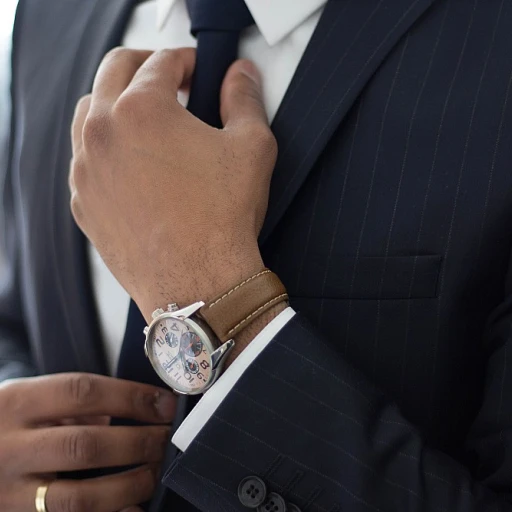
The Anatomy of a Suit Jacket
The Core Structure of a Suit Jacket
When exploring the world of men's fashion, understanding the essential components of a suit jacket is crucial. This piece, often central to your formal wardrobe, is an artful blend of style, function, and elegance. At its core, a suit jacket is defined by certain key elements that each play a role in the overall appearance and fit.
The lapel is one of the most noticeable aspects of the suit jacket. Whether it's a notch, peak, or shawl, the shape of the lapel can dramatically influence the style of the suit. Notch lapels are the most common, often featuring in single breasted suits, while peak lapels are typically found in more formal or double breasted jackets.
Buttons also play a pivotal role. Single, two, or three button formats can be chosen based on personal style and the formality of the occasion. The bottom button is traditionally left undone to maintain the jacket's shape when worn. For a more formal black tie event, the double breasted jackets with peak lapels often make a strong statement.
A well-crafted suit jacket doesn't stop at lapels and buttons. The fit is paramount in achieving the desired look. It must seamlessly complement your body shape, offering comfort without compromising style. From the shoulders to the waist, the jacket should provide a tailored fit that enhances your overall silhouette.
The interior pocket details shouldn't be overlooked either. Functional pockets, both inside and external, serve as subtle enhancements to your jacket’s utility and style. Incorporating a suit jacket that can double as a blazer can significantly elevate versatility in your wardrobe.
These components together make the suit jacket an indispensable piece of any man’s wardrobe, offering a foundation that allows you to express individual style, whether worn with accompanying trousers, or as a standalone piece in less formal settings. As we continue to deconstruct the parts suit, we'll also see how the role of a waistcoat and accessories like bow ties and pocket squares integrate to complete the ensemble.
Trousers: The Foundation of a Suit
The Foundation of a Stylish Ensemble
Trousers hold a pivotal role in defining the overall silhouette and appearance of any suit. While jackets command attention with their lapels, buttons, and pockets, the fit and style of trousers should never be underestimated. These garments complete the formal look, providing the necessary balance to the upper piece.
Choosing the right suit trousers involves considering several essential factors:
- Fit: The most crucial aspect to consider. Properly fitted trousers complement the suit jacket effortlessly, ensuring a cohesive appearance. Trousers must be neither too tight nor too baggy, as an ill fit can detract from the suit's elegance.
- Style: Trousers come in various styles such as single breasted, double breasted, and even part of a three-piece suit. Each has its unique flair and elegance, impacting how the suit is perceived.
- Waist and Length: Both must be tailored accurately to avoid any unsightly bunching or awkward gaps when standing or sitting.
Accurately selecting the right trousers not only enhances the style but also ensures comfort, an underrated aspect often overlooked in formal wear. For more insights on features that differentiate suit styles, explore distinctive features of a tuxedo and a suit to broaden your understanding.
The Role of the Waistcoat
Navigating the Significance of the Vest in a Suit Ensemble
The waistcoat, or vest as it's commonly known, brings an additional layer of refinement and sophistication to a suit. This essential piece doesn't just fit the mold of a formal occasion but adds versatility to your suit ensemble. When well-coordinated with the suit jacket and trousers, the waistcoat elevates your style from simple to polished. Featuring in both three piece and breasted jackets, a waistcoat can be either single breasted or double breasted. The choice between these options impacts the formal appearance significantly. A single breasted waistcoat, with its subtle, minimalist style, can seamlessly blend into a business meeting or a semi formal event. In contrast, a double breasted variant commands attention and exudes a traditional charm, making it a staple at black tie gatherings.Fitting and Styling the Vest
Achieving the right fit is crucial when incorporating a waistcoat into your suit. The vest should lay flat against your torso, avoiding any pulling at the buttons, while the bottom button is traditionally left undone for comfort. By coordinating the waistcoat with a suit jacket and trousers in harmonious colors and fabrics, you create a coherent three piece suit that speaks to your attention to detail. A well-selected waistcoat can also complement the lapels of your suit jacket, be it peak lapel or another style, enhancing the overall appearance. It’s essential to choose a vest with a matching or complementary lapel style to maintain a seamless look. While the waistcoat is typically worn with a tie or bow tie, adding a pocket square can further accentuate your ensemble, offering a pop of color or pattern. It’s these small details that transform an outfit into a personal style statement, allowing for a unique yet classic presentation.Shirts: Complementing the Suit
Shirts: The Ideal Accompaniment to Every Suit
When it comes to putting together the perfect formal attire for men, the shirt plays a crucial role in complementing your suit. It isn’t merely a background player in the sartorial ensemble; rather, it has its own part in defining the overall style and sophistication.
Opting for the right shirt is as important as selecting the perfect jacket and trousers. A well-chosen shirt enhances the fit and appearance of the suit, harmonizing with the lapels and overall design of the outfit, whether it be a single or double breasted jacket. To achieve a cohesive look, ensure that the shirt’s color and pattern complement the other pieces.
Buttons also play a significant role, offering subtle refinement. Traditional shirts often feature button-up designs that contribute to the formal appeal. For occasions requiring elevated elegance, like a black tie event, consider wearing a bow tie, which can be paired seamlessly with a button-up shirt of crisp white or muted tones.
In a three-piece suit ensemble, where the waistcoat is involved, choosing a shirt that aligns with the waistcoat’s style is paramount. Details like the front pocket or the cut of the lapel on the waistcoat should inform your shirt choice.
Finally, consider the collar style—an understated yet pivotal detail. A classic spread collar, for instance, offers a versatile option compatible with most types of ties and suits. The idea is to achieve a unified look where the shirt serves as a harmonious underlayer, providing a balanced backdrop to your formal outfit.
Remember, shirts aren't just a staple; they are a defining element that completes the face of your formal piece suits. When well-paired with your choice of lapels, pocket square, and trousers, the right shirt can elevate both semi-formal and highly formal attire to great sartorial heights.
Accessorizing with Ties and Pocket Squares
Adding Flair with Ties and Pocket Squares
When it comes to enhancing your suit's elegance and style, the right accessories can make a world of difference. Ties and pocket squares are not just additional pieces; they are essential elements that bring a suit to life, tying the outfit together with sophistication and flair. Ties are a staple in formal and semi-formal settings. Whether you're wearing a single-breasted or double-breasted jacket, the tie acts as a focal point. Opt for a tie that complements the color and pattern of your shirt and jacket. For a classic look, ensure your tie contrasts subtly with your three-piece suit, creating visual interest without overpowering the ensemble. Patterns such as stripes or polka dots can bring an extra dimension to your style when worn with a plain waistcoat or suit jackets. Next, let's talk about the pocket square. This small piece of fabric can elevate your style from ordinary to extraordinary. Depending on the occasion, you can choose a pocket square that matches or contrasts with your tie. A bold pocket square with a peak lapel jacket adds a touch of personality and speaks volumes about attention to detail. Remember, the key to mastering pocket squares is ensuring they complement your suit's overall style without being overly garish. In men's fashion, buttons are often overlooked, but they play a subtle yet pivotal role in accessories. A strategically matched tie and pocket square can draw attention to the buttons on a jacket, whether they're on a single-breasted or a striking double-breasted suit. Consider a tie and pocket square combination that doesn't clash with the buttons, particularly the bottom button of the jacket, ensuring the whole ensemble works harmoniously. Ultimately, the goal is to create a cohesive look that doesn't just follow trends but highlights your unique style. In combination with well-fitted trousers and a crisply tailored suit jacket, ties and pocket squares become vital instruments for expressing personal style while adhering to the timeless principles of men's fashion.Shoes and Belts: Completing the Ensemble
Finishing Touches with Footwear and Belts
The final stage of suit mastery involves selecting the perfect shoes and belt to enhance your formal or semi-formal style. These elements may seem secondary, but they are critical to completing the look of a suit. Both the shoes and the belt should harmonize with the suit’s tone, texture, and style, tying together all the different parts suit.
Shoes for different occasions: A basic understanding of shoe types elevates your dress game. Black tie events typically call for sleek, polished oxfords—desirable for their classic and elegant appeal. For a less formal occasion, derby shoes or loafers can offer a touch of personality while ensuring sophistication.
The importance of color matching: When crafting a cohesive appearance, an oft-overlooked aspect is color coordination. Black shoes create a stark and powerful contrast with deep-colored suits or a classic black suit. Brown shoes, ranging from tan to dark brown, provide versatility and warmth, ideal for blues, grays, or earthy-toned three piece suits.
Belt basics: When it comes to belts, the golden rule is consistency. A belt should seamlessly blend with your chosen shoes in terms of color and finish. This harmony keeps visual distractions at bay and propels your style forward. Consider both molded and stitched designs, ensuring they complement the formality of your attire.
The subtle art of minimalism: Remember, less is more when it comes to accessories like belts and shoes. Keep embellishments minimal to ensure that though each piece speaks, it's not shouting over your meticulously chosen suit jacket and trousers.
Ultimately, the right footwear and belt selection is what breathes life into your entire outfit, aligning seamlessly with the intricacies of a suit, from the sleek lapels of a jacket to the structured form of trousers. Meticulous attention to these details will elevate any man's wardrobe, ensuring a polished and sophisticated presentation.

